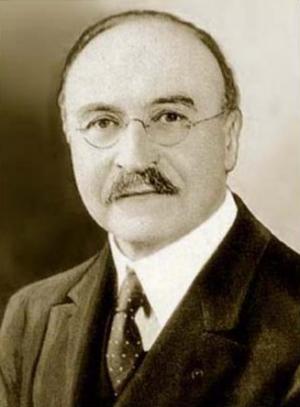 SKC Films Library SKC Films Library |
| SKC Films Library >> Technology >> Chemical Technology >> Biography |
 Leo
Baekeland Leo
Baekelandinventor of the first true plastic Leo Hendrik Baekeland was born in Ghent, Belgium, on November 14, 1863. He showed academic brilliance at an early age, and won medals in chemistry, physics, mechanics, and economics. At the age of 17 he earned a scholarship to Ghent University, from which he obtained his Doctor of Science degree at the age of 21. He was a professor of chemistry at Ghent University from 1882 to 1889, and a professor of chemistry and physics at the Government Higher Normal School of Science in Bruges from 1885 to 1887. He then went into private business and founded the Nepera Chemical Company, which he operated from 1893 to 1899. In 1899 he emigrated to the United States and settled in New York City. Fascinated with photography and all the chemical processes involved in that field, Baekeland experimented with various photographic chemicals before developing a special form of silver chloride that produced a superior emulsion which in turn printed images faster and allowed the substitution of artificial light for sunlight in developing the film. He subsequently sold the process for manufacturing Velox photographic paper to the Eastman Kodak Company for a substantial sum of money, giving him the freedom to conduct even more research. While searching for an insulating shellac to coat wires in electric motors and generators, Baekeland discovered that mixtures of phenol and formaldehyde formed a sticky mass when mixed together and heated, and that the mass became extremely hard if allowed to cool and dry. Further experiments showed that the material could be mixed with wood flour, asbestos, or slate dust to create a variety of composite materials, each with different properties. Most of these composites proved to be strong and fire-resistant. After making improvements to the manufacturing process, Baekeland became the first to patent a completely synthetic polymer resin, which he named Bakelite, on February 18, 1907. In 1910 he established the General Bakelite Company to manufacture and sell the product. The first true plastic, Bakelite proved to be cheap to produce, but strong and durable. It was molded into thousands of forms, including radio cases, furniture elements, jewelry, buttons, and billiard balls. While no longer produced under the tradename of Bakelite, Baekeland's polymer resin is still used to manufacture such diverse products as wire insulation, automobile elements, dishware and flatware, household products, and electronic circuit boards. Leo Baekeland died on February 23, 1944. |
| SKC Films Library >> Technology >> Chemical Technology
>> Biography This page was last updated on May 18, 2017. |